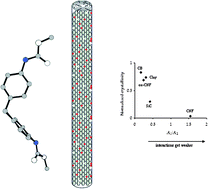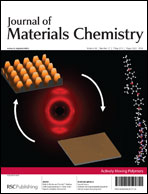Non-covalent interactions between filler particles and polyurethanes were investigated using fluorescence emission spectroscopy. The results were used in the analysis of shape memory (SM) performance of polyurethanes. Composites of shape memory polyurethane (SMPU) and carbon nanofiber (CNF), oxidized carbon nanofiber (ox-CNF), organoclay, silicon carbide, and carbon black were prepared from diphenylmethane diisocyanate, 1,4-butanediol, and poly(caprolactone)diol. It was revealed by fluorescence emission spectroscopy that primarily the urethane groups located in the hard segments of SMPU interacted with the polar functional groups on filler particles. A close correlation between the extent of non-covalent filler–matrix interactions, soft segment crystallinity, and SM properties of polyurethane composites was discussed. It was observed that weak non-covalent interactions of polymer chains with CNF and SiC particles caused significant reductions in soft segment crystallinity of SMPU and hence the shape memory properties of the composites.

You have access to this article
 Please wait while we load your content...
Something went wrong. Try again?
Please wait while we load your content...
Something went wrong. Try again?


 Please wait while we load your content...
Please wait while we load your content...